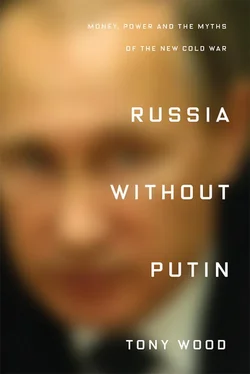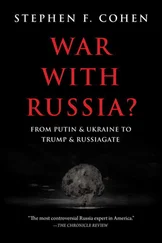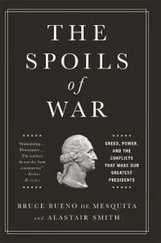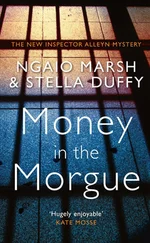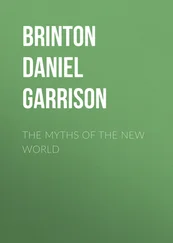One of the things that made Sorokin’s dark satire compelling was that it extrapolated recognizable features of the present – including Russia’s already excessive reliance on natural resources, which today account for three-quarters of the country’s exports. {12} 12 In 2015, exports of mineral products, metals and precious metals came to $237 billion, out of a total of $317 billon; data from the Observatory of Economic Complexity, atlas.media.mit.edu . The most recent data, from 2016, include a sizeable volume of ‘Unspecified’ exports, making precise calculations impossible.
This structural feature of the Russian economy has been long in the making, and seems destined to linger, imposing powerful limits on the country’s ability to choose its own path in future.
The prolonged economic disaster of the 1990s and then the recovery in the 2000s somewhat obscured the relentless progress of a shift that had been under way since at least the 1960s. Soviet industrial growth, after achieving impressive results at tremendous human cost in the 1930s and 1940s, began to slow in the postwar period, the pace dropping even as equipment began to age. A rash of oil discoveries in Western Siberia allowed the Brezhnev regime and its successors to paper over the problems caused by this slowdown; instead of a deeper recession, the USSR experienced a long period of stagnation. But the relief afforded by energy exports also brought a growing dependency on them: they went from 16 per cent of total exports in 1970 to 47 per cent in 1987. {13} 13 Boris Kagarlitsky, Empire of the Periphery: Russia and the World System , London 2008, p. 292, citing SSSR v tsifrakh v 1987 .
In the mid-1980s, a drop in oil prices starved the USSR of funds just as Gorbachev was implementing his economic reforms, and the low continued for much of the 1990s, making the post-Soviet slump longer and deeper than it might otherwise have been. Prices only really recovered at the end of the century, in time for Putin to benefit from them. Since then, Russia has become ever more dependent on energy exports: they accounted for half of total exports in 2000, and that share rose steadily each year until Western sanctions began to bite in 2015. {14} 14 Data on fuel exports from World Bank online database.
Gas, too, has become an important export product, as have precious metals and ores, with which Russia is also abundantly endowed.
The disproportionate size of the primary-resource sector spells trouble for the rest of the economy, as the experience of many other countries has shown, from the ‘Dutch Disease’ of the 1960s to the impact of oil on Nigeria and Venezuela. The overwhelming weight of lucrative export commodities causes currency appreciation that leaves other industries uncompetitive; this makes it all the more difficult to pursue alternative strategies for growth, deepening the ‘resource trap’. The Russian government has repeatedly affirmed the need to diversify the economy – perhaps the peak expression of this being Medvedev’s 2009 pseudo-manifesto ‘Forward, Russia!’, which bemoaned the country’s ‘primitive resource economy, chronic corruption, our outmoded habit of relying on the government, on foreigners or on some “almighty teachings” to solve our problems – on anything except ourselves’. {15} 15 Dmitri Medvedev, ‘Rossiia, vpered!’, Gazeta.ru , 10 September 2009.
Yet for all that, the ‘modernization’ Medvedev promised never materialized, and Russia’s dependence on natural resources if anything increased, especially under the impact of the 2008 economic crisis and the post-Ukraine sanctions. After tumbling for several years, oil prices stabilized in 2016 and then crept up again, and in the meantime the economy had staged a modest recovery, allowing the Kremlin to balance its budgets once more. But growth estimates for the next few years are sluggish at best – in late 2017, the OECD projected Russian GDP growth of under 2 per cent for 2018–19 {16} 16 OECD Economic Outlook 2017 , Paris 2017, p. 216.
– and certainly insufficient to fund a wholesale overhaul of the economy. Based on current trends, it’s hard to imagine Russia’s resource dependency being reduced by much before the 2028 of Sorokin’s fantasy.
What this means in turn is that Russia will struggle to regain its Soviet-era niche as an industrial power. The transition to capitalism brought an accelerated deindustrialization, increasing Russia’s reliance on energy exports without producing any compensating gains in employment. After all, one of the features of what is known as the ‘fuel-energy complex’ is that it requires considerably less labour than manufacturing. Russia’s already diminished industrial sector has thus far been unable to attract the levels of investment, domestic or foreign, that would be required for a new burst of growth, making a Chinese- or East Asian-style ‘miracle’ hard to imagine, even if those earlier successes hadn’t already raised the levels of global competition still higher. [17] The fact that so many of Russia’s wealthy park their money overseas rather than investing it in Russia itself not only fuels tremendous domestic inequalities, but also puts the country at a strategic disadvantage internationally.
Unable to compete with China and the Asian Tigers on wages, Russia similarly lags behind its wealthier Western peers in terms of high-value goods – another instance of the country’s difficult middle position. Having moved up the economic hierarchy over the course of the twentieth century, Russia is likely to find itself stuck several rungs lower down in the twenty-first.
A further constraint on Russia’s ability to manoeuvre – and one that is equally symbolic of its global downsizing – is its dwindling population. It is still the ninth most populous country in the world, with 143 million inhabitants at the time of the last census, in 2010. But that number is set to contract inexorably in the coming years: the UN Population Division envisages a drop to 133 million by 2050, and to 126 million by 2050; by the start of the next century it could be as low as 124 million. This will push Russia down the global demographic hierarchy: the fourth most populous state in the world in 1950, by 2050 it will have fallen to fifteenth place, overtaken by Pakistan, Ethiopia and Egypt, among others. {17} 17 Figures from UN Population Division Database.
This decline represents the continuation of a demographic crisis that first became visible in 1992, when deaths exceeded births in Russia for the first time since the Second World War. Between the collapse of the USSR and the last census, in fact, Russia’s population decreased by an estimated 5.4 million, an annual average drop of 284,000. The traumas of transition played a role in this shrinkage, the post-Soviet years bringing a spike in mortality and a collapse of the public health infrastructure. But its roots are broader and deeper, going back to longer-term processes of demographic change over the course of the twentieth century – declining birth rates linked to urbanization and rising female literacy – as well as the catastrophic losses inflicted by war and Stalinist terror. {18} 18 The most detailed account of this history is Anatoly Vishnevsky et al, Demograficheskaia modernizatsiia Rossii, 1900–2000 , Moscow 2006.
Though the Kremlin has enacted some pro-natalist policies, offering monetary incentives for women to have more children, these efforts will not be enough to offset the decline, much less reverse it.
The shrinking of the population is taking place at the same time as a marked ‘greying’ of Russian society: an increase in the proportion of middle-aged and elderly citizens. In 2010, 18 per cent of the total population was over sixty – the same proportion as in the US, and considerably less than in Germany or Japan. The UNPD’s projections show the percentage rising over the coming decades, to 29 per cent by 2050, levelling off thereafter until 2100 – an estimated 36 million people. This would again be a share similar to the US’s, but less than Germany’s or Japan’s.
Читать дальше
